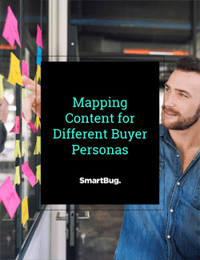
How Retailers Are Using AI to Power their Marketing Communications
June 21, 2018
By Kristen Deyo
We’re in the age of the customer, and that means providing a seamless experience across channels, delighting customers with same-day deliveries, and providing unparalleled customer service and personalized recommendations that garner evangelism and brand loyalty.
But personalized commerce isn’t just about big data—it’s about the innovative ways marketers use that data to deliver the personalized, contextually relevant experience customers have come to expect. Retailers who are proactively working to give their customers the best possible experience are approaching marketing in an entirely different, data-driven way. Think you have to be Amazon, Nike, or Google to turn actions into insights? Think again.
The Power of AI in Retail
- By 2020, 85 percent of customer interactions in retail will be managed by artificial intelligence, according to Gartner.
- According to Business Insider, shoppers who interact with online reviews and opinions are 97 percent more likely to convert with a retailer than customers who do not.
- Forbes suggests 70 percent of U.S. millennials and 62 percent of millennials in the U.K. say they would appreciate a brand or retailer using AI technology to show more interesting products.

But First, an AI Refresher
Artificial intelligence is having a transformative impact on the technology landscape and is already showing promise for retail. But before we go further, here’s a quick refresher on AI via Google:
“Artificial Intelligence is the study of how to make machines intelligent or capable of solving problems as well as people can. At its core, machine learning is a new way of creating those problem-solving systems. For decades, programmers manually coded computer programs to provide outputs when given a certain input.”
With machine learning, we teach computers to learn without having to program them with such a rigid set of rules. Instead, we show a system several examples until it eventually starts to learn from them on its own.
The New Marketing Mindset: Putting AI to Work
Forward-thinking companies are competing (and winning!) based on their ability to offer relevant marketing content that is tailored to a customers’ behavior, preferences, and context. Using new technology innovations in artificial intelligence helps retail marketers select the most profitable content for each customer, thus delivering the right content at the right time across the most relevant channel or device.
Here are some examples of how marketers are putting AI to work in order to deliver personalization—and relevance—at scale to the consumer:
AI Chatbots Are Creating a Big Shift in Customer Service
With the rising popularity of mobile messaging apps and the need for 24/7 service, chatbots are becoming a new retail standard. In fact, according to IBM, 65 percent of millennials prefer interacting with bots over talking to live agents. Using chatbots helps marketers improve the customer experience, offer tailored recommendations and services, and automate the purchase process, as well as significantly cut costs.
AI-Powered Deep Learning Offers Rich, Actionable Customer Insights
The more data retailers are able to collect, the quicker marketers can turn those insights into action and automate key processes. Leveraging data in this manner is invaluable when it comes to personalization because in order to provide a truly personal experience, you need to be able to respond to each consumer’s needs at the moment most convenient for them.
Deep learning algorithms can empower marketers with:
- Autonomous product labeling, thus improving the searchability of products and catalogue inventory management
- Personalized product recommendations based on user data (behavior, locations, and so on)
- Predicting consumer intent and purchasing behavior in order to optimize marketing campaigns for better conversion
AI-Powered Visual Search Enhances the Shopping Experience
Although visual search has been around for a long time, advancements in artificial intelligence and the rise of mobile commerce have made it much more attractive to retailers. This is because visual search provides much more intuitive and versatile ways for tech-savvy consumers to shop.
Retailer Neiman Marcus is already leveraging this technology with its Snap.Find.Shop app, which allows customers to take pictures of clothing they like and have the app display similar items from the store’s inventory. Not only has Neiman Marcus seen a huge uptake in the app’s usage, it has also seen a significant increase in customer engagement and repeat purchases.
Conclusion
Retail marketers are seeking new and innovative ways to gain competitive edge as the lines between brick-and-mortar and the digital storefront blur. They are met with growing consumer demands for a highly personalized, contextually-relevant experience. Innovations in AI technology are now helping marketers connect with customers in new and meaningful ways and improve the retail experience end to end.
About the author
Kristen Deyo was formerly a Director of Marketing Strategy at SmartBug based in Kingston, Ontario, Canada. She has 8+ years experience developing strategies for primarily B2B SaaS/technology companies and hyper-growth startups. She holds degrees from Queen's University (Cha'Gheill!) and the St. Lawrence School of Business. When not digitally plugged in, you can find her enjoying a good happy hour or planning her next adventure. Read more articles by Kristen Deyo.








